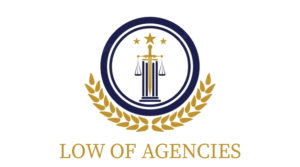Understanding the Essential Information for a Paystub
A paystub serves as a document that provides detailed information about an employee’s earnings and deductions for a specific pay period. It acts as a proof of income, which is vital for various financial transactions such as applying for loans, managing taxes, and ensuring accurate records for future references. Given its importance, it’s crucial for employers to include comprehensive and accurate information on paystubs to maintain transparency and compliance with legal requirements. This article outlines the essential information that needs to be included on a paystub, ensuring it’s beneficial for both the employer and the employee.
Employee and Employer Identification
First and foremost, a paystub should clearly identify both the employer and the employee. This includes the employer’s name and address, as well as the employee’s name and employee identification number or social security number. This basic information sets the foundation of the paystub, linking the document to the specific employer and employee.
Pay Period and Date
The paystub must include the pay period, indicating the start and end dates of the period for which the employee is being paid. Additionally, the pay date—the day the employee receives their wages—should also be mentioned. This information is crucial for the employee to understand the timeframe the paystub covers, especially for tracking earnings and understanding how the pay period aligns with their work schedule.
Gross Earnings
Gross earnings represent the total amount earned by the employee before any deductions are made. This figure includes all forms of income, such as hourly wages, salaries, overtime pay, bonuses, and commissions. The paystub should clearly break down these earnings, providing a detailed overview of how the gross amount was calculated. This transparency helps employees understand their compensation structure and ensures they are being paid correctly for their work.
Taxes and Deductions
One of the most critical sections of a paystub is the detailed list of taxes and deductions. This section should include:
- Federal and State Taxes: The amount withheld for federal and state income taxes, based on the employee’s tax bracket and withholding allowances.
- Social Security and Medicare: Contributions to Social Security and Medicare, often referred to as FICA taxes.
- Other Deductions: This can include retirement plan contributions, health and dental insurance premiums, life insurance premiums, and any other voluntary or mandatory deductions. Each deduction should be listed separately with the amount deducted during the pay period.
Net Pay
After all deductions are subtracted from the gross earnings, the remaining amount is the net pay or take-home pay. This is the amount that the employee actually receives. The paystub must clearly display the net pay, as it’s the most directly relevant figure for the employee, showing what they will see in their bank account for a free check stub maker with calculator.
Year-to-Date Totals
Including year-to-date (YTD) totals for both earnings and deductions provides employees with a cumulative overview of their earnings and deductions for the current year. This information is particularly helpful for personal record-keeping, financial planning, and preparing for tax season, as it offers a broader perspective on the employee’s financial situation.
Employer Contributions
Employer contributions, such as those towards retirement plans or employer-paid benefits (e.g., health insurance), should also be listed on the paystub. While these contributions might not directly impact the employee’s net pay, they represent additional compensation and benefits provided by the employer, highlighting the total value of the employee’s compensation package.
Paystub Readability and Compliance
Ensuring the paystub is easily readable and understandable is crucial for effective communication. Employers should use clear, straightforward language and avoid unnecessary jargon or abbreviations that could confuse employees. Moreover, compliance with local, state, and federal regulations is paramount. Employers must be aware of the specific requirements in their jurisdiction, as regulations regarding paystub information can vary significantly.
Conclusion
A well-prepared paystub is more than just a record of payment; it’s a transparent, comprehensive document that supports financial management, compliance, and trust between employers and employees. By including the essential information outlined above, employers can ensure their paystubs serve their intended purpose effectively. It’s not only about meeting legal obligations but also about fostering a positive workplace environment where employees feel valued and informed about their earnings and deductions.
In the evolving landscape of the workforce, where digital check stubs with calculators are becoming more prevalent, the principles of clarity, accuracy, and thoroughness remain paramount. Whether paper or digital, a paystub is a fundamental component of employment that underscores the importance of meticulous record-keeping and open communication in the workplace.

